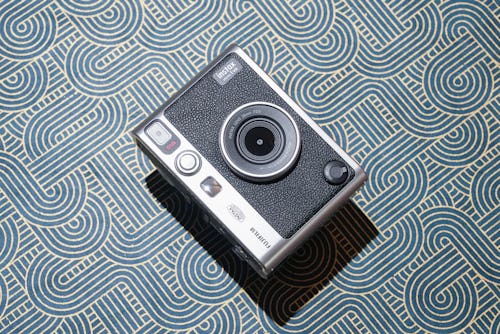
I am not being hyperbolic when I say Fujifilm’s Instax Mini Evo is the greatest instant camera ever made.
The Instax Mini Evo is the culmination of 23 years worth of Instax instant cameras. In over two decades, Fujifilm has experimented with a variety of different Instax formats from wide to square (mini Polaroid knockoff), but the mini format has remained the most popular. And for good reason: Instax Mini film is the cheapest and the most shareable. Turns out dimensions that fit in wallets are a very important aspect to making Instax Mini prints so attractive (and giftable).
While the majority of Instax Mini cameras are usually bubble-shaped and toy-like, the Instax Mini Evo borrows from 35mm film heritage. The silver and faux black leather design is heavily influenced by film cameras like Fujifilm’s Fujica Compact 35, as are the dials and the film advance lever on the rear that prints photos instead (an extremely satisfying function that is a showstopper).
The Instax Mini Evo is a beautiful homage to film cameras.
At $200, the Instax Mini Evo seems pricey for an Instax camera, especially when Fujifilm's Instax Mini 11 retails for $70 and the Instax Mini 40 I reviewed last year goes for $100. The price makes more sense when you realize the Instax Mini Evo also prints photos onto Mini film from a smartphone, it's got a 3-inch display, there are a variety of really neat filters and effects controlled with the lens ring and dial, there's a cold shoe mount for accessories, and two shutter buttons.
If there was ever an Instax Mini camera deserving of being called "pro," the Instax Mini Evo is it. The Instax Mini Evo is a beautiful homage to film cameras and one that nobody would be embarrassed to pull out at any event.
Input may receive a portion of sales if you purchase a product through a link in this article. We only include products that have been independently selected by Input's editorial team.
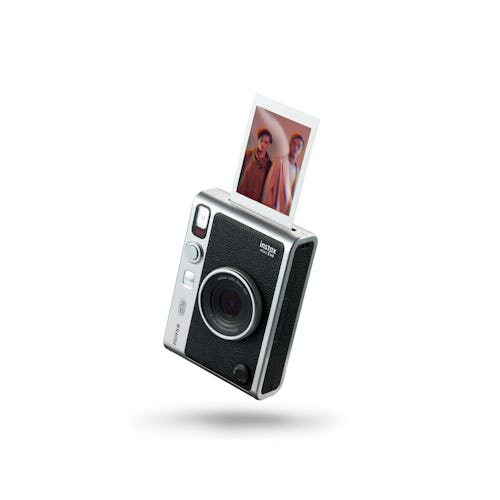
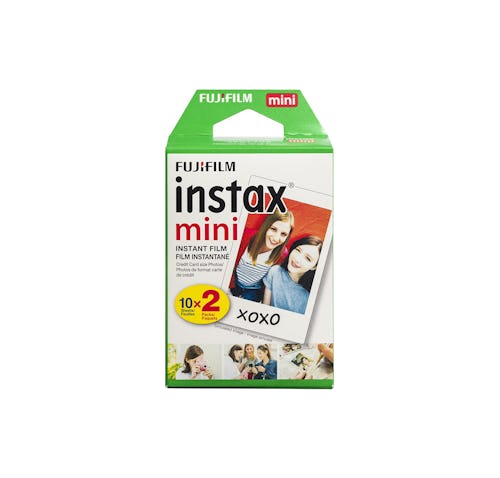
Old school cool
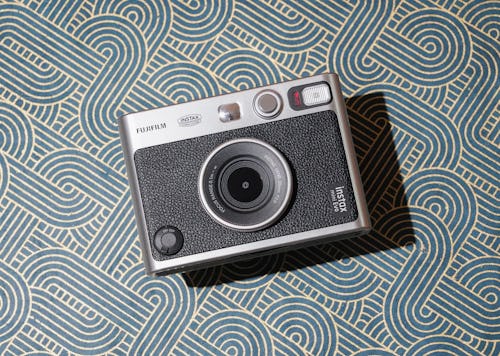
When Fujifilm announced the Instax Mini Evo last December, I practically screamed. The Instax Mini Evo is every bit as stunning in person as it is in pictures. The entire case and all of the buttons, rings, dials, and lever are made of plastic for a lightweight carry. Camera nerds will say Fujifilm should have gone with metal and leather considering the $200 price, and I admit that would have been a great throwback to film cameras, but the details like the knurling on the lens ring and rear dial and the radial brushed metal and chamfered edges really do show deliberate care went into getting things right.
Though Fujifilm doesn't straight up say the Instax Mini Evo is a successor to its first premium Instax camera, the Instax Mini 90, it basically is. At the time of its release in 2014, the Instax Mini 90 retailed for $150 (now about $137 on Amazon); the Instax Mini Evo's $200 price tag clearly distinguishes it as flagship.
Retro photo vibes
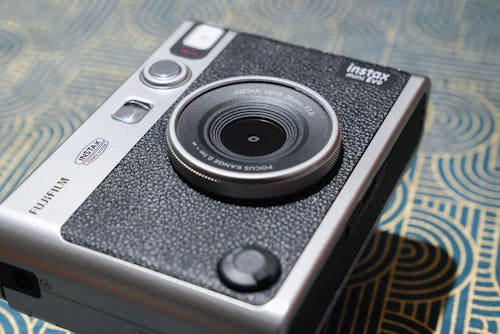
Shooting with the Instax Mini Evo is, by far, a lot more fun than any Instax camera — I'm not exaggerating when I say I've tried them all and own many of them. (I might have a small addiction; there are worse vices.)
Like any digital instant camera, if you drill in on the image sensor specs, you're going to be disappointed. The Instax Mini Evo's built-in camera doesn't hold a candle to an iPhone 13 Pro or Galaxy S21 Ultra or Pixel 6 Pro. In fact, the images are such low-resolution by today's standards (2,560 x 1,920) that Fujifilm doesn't even total its megapixels on its website (4.92 megapixels if you're wondering). The lens has a 28mm equivalent focal length with an f/2.0 aperture with a focus range of 0.1 meters to infinity.
The glorious print lever — I can't gush about this thing enough.
These specs don’t matter, though. They never have for an instant camera. And they don’t matter on the Instax Mini Evo. They simply don't factor into the fun and joy of shooting with the Instax Mini Evo. Remember: the instant film aesthetic is not tack sharpness, it's imperfection and slight fuzziness, and that's okay. The features that do matter are all present: flash, selfie mirror, dual shutter buttons for portrait and landscape orientation (just like on the Mini 90), a built-in timer, ¾-inch tripod mount, 3-inch display (non-touchscreen unfortunately), the lens dial that switches between 10 effects with every rotation, a film dial that changes between 10 film effects, the cold shoe mount, and an effect reset button (that little silver button to the right of the cold shoe). And, of course, the glorious print lever — I can't gush about this thing enough. Pulling it back to print a photo is a mini triumph every time.
On my first go, I pulled the Instax Mini Evo up to my eye only to realize there is no optical viewfinder below the cold shoe or in the corner like it is in every Mini Instax camera. It took a few shots to break the reflexive habit. I'm glad there's no viewfinder; the ones on other Instax cameras are always off with the framing (usually to the left or right). The LCD is always accurate — what you see is exactly what you get. The buttons beneath the screen are all self-explanatory. Now, the lens ring and effects dial — this is where the fun is.
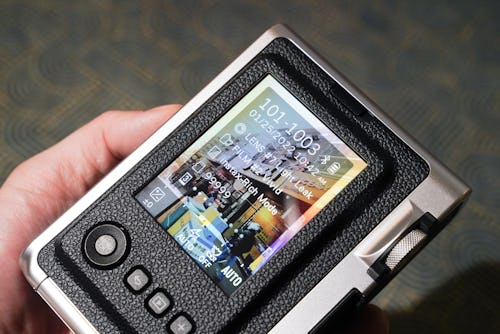
Rotate the lens ring and you get 10 lens effects: normal, vignette, soft focus, blur, fisheye, color shift, light leak, mirror, double exposure, and half-frame. Rotate the film dial and you get 10 film effects: normal, vivid, pale, canvas, monochrome, sepia, yellow, red, blue, and retro. And you can mix the lens and film effects (two at once). My favorite is the light leak and color shift lens effects and the retro and monochrome film effects. The Instax Mini Evo is a touch slow to switch effects so you won't be breezing through them at all, but it's not intolerable. Think of it like shooting film. Patience! Combining effects feels like you're shooting manual with a film camera, except you're not controlling settings like aperture or shutter speed; using analog controls for effects is good input and any other way via primitive button presses is incomparable now.
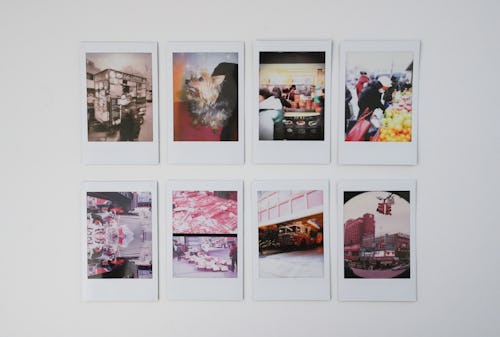
Definitely get yourself a microSD card because the internal storage only has room for 45 images. Fujifilm says a 1GB microSD card can hold about 850 images. Being the maniac I am, I stuffed a 1TB — yes terabyte — microSD card in the Instax Mini Evo and hope to never run out of storage. At least I don't think I'll shoot 850,000 photos anytime soon. But do as you wish (and your budget allows).
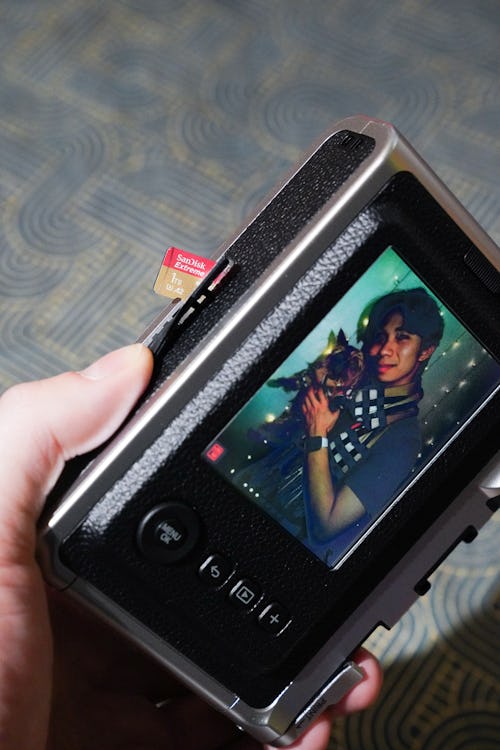
Instax Mini film remains affordable. At the time of this writing, a box with two packs (10 sheets each) is $13.38 on Amazon or $1.33 per print. That's about right. If you can find them on sale or in bulk, prints can come down to around $1. A dollar for a memory you can gift someone is a dollar well spent.
Phone prints
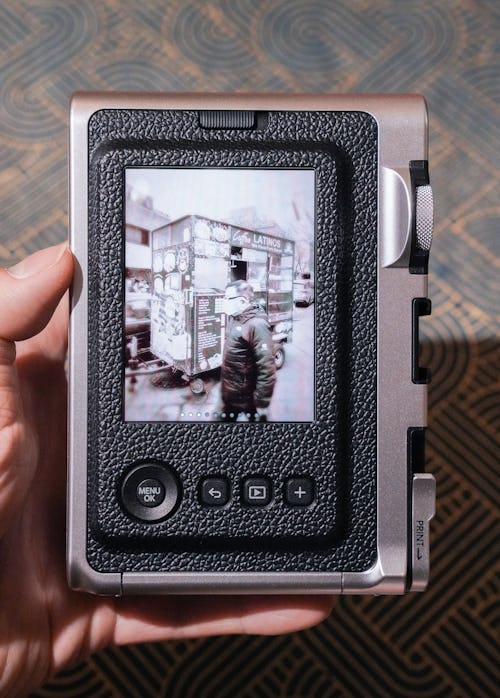
I absolutely adore Fujifilm's Instax SP-2 Mobile Printer. I've had it for years and bring it to every party I attend. It's always a hit, especially when I "magically" materialize printed selfies and group photos "from" my smartphone. Everyone loves holding an Instax Mini print in their hands and they love it even more when they can take it with them. I'll let you in on a secret: They make for memorable party favors and keepsakes — nobody will be forgetting the moment or you when the print's slipped into a wallet or hung on a fridge.

The Instax Mini Evo doubles as an SP-2 printer when connected to a smartphone over Bluetooth. From the Instax Mini Evo app (available for iOS or Android), you can get print photos from your camera roll as is or edit them with picture adjustments or filters first. The image adjustments are limited and you can't add special frames or doodles or timestamps to your pictures like you can with the Instax SP-2. But I'm cool without the gimmicks. The app is a major improvement in terms of interface design and reliability compared to the Instax Share app for the SP-2 printer.
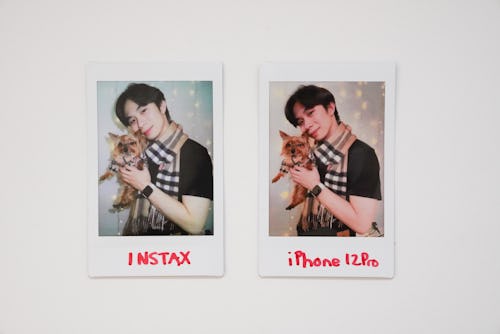
If you want the best image quality prints, you'll wanna print front your phone, which — even the most recent budget phones — should be leaps better than the Instax Mini Evo's 4.92-megapixel camera. I do both (and have been doing so for years with Instax cameras and the SP-2) and let me tell you: resolution is the least of your worries if you're into instant photography. The physical captured moment is all that matters.
Instant hit

There are a few small things I do not like about the Instax Mini Evo. One: The Micro-USB charging port. I will rag on every gadget that uses Micro-USB instead of USB-C — get with the times. A Micro-USB-to-USB-A cable is included in the box, but everyone and their mother has switched to USB-C now; it's annoying to have to carry a USB-A charger (not included) just for the Instax Mini Evo if you're traveling. Two: The Instax Mini Evo app is a separate one from the Instax Share app for the SP-2 printer. I'd like to advocate for one Fuji app that works for all wireless-compatible Instax cameras/printers. And three: the camera shuts down whenever you take the microSD card out. You need to flip the power switch off and then back on again after you reinsert the card.
Other than these really minor complaints, the Instax Mini Evo is the ultimate instant camera. Polaroid and its many revivals (Impossible and then Polaroid Originals) before it came back full circle has tried numerous ways to bring smartphone connectivity to its iconic 600-type film, but the results have been half-baked, which always left me to ignore it altogether. The Instax Mini Evo marries Instax Mini film with touches of film camera nostalgia while sticking the landing on phone connectivity.
The Instax Mini Evo is a head-turner in the streets.
To put the price in context: The SP-2 launched at $200 in 2016. That's without a built-in camera. Fujifilm's since discontinued the SP-2 (you can find it on Amazon for $270 but you shouldn't buy it) and replaced it with the Instax Mini Link Smartphone Printer (starting at $118). If all you want is an Instax Mini printer, then get the Mini Link and save yourself $82. But if you want a camera inside of a gorgeous retro design, the Instax Mini Evo's built-in camera and analog-ish controls are a very small premium over a Mini 11 — $12 more for the Instax Mini Evo compared to the Mini 11. Fujifilm also sells the Instax Mini LiPlay for the same $200. The tech specs are identical, but you don’t get the sleek design, or the lever, or effects built into the lens ring and dial. The Instax Mini Evo is superior on every level.
I said it at the beginning and I’ll repeat it: The Instax Mini Evo is the best instant camera Fujifilm — nay, best instant camera full stop — you can buy right now. Everyone I've shown it to has told me they want one. The Instax Mini Evo is a head-turner in the streets. Good, because it's coming out in the U.S. next week on February 1.







